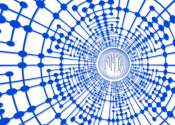Smartphone videos produce highly realistic 3-D face reconstructions
Normally, it takes pricey equipment and expertise to create an accurate 3-D reconstruction of someone's face that's realistic and doesn't look creepy. Now, Carnegie Mellon University researchers have pulled off the feat using ...
Apr 1, 2020
0
59









